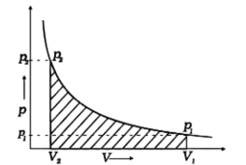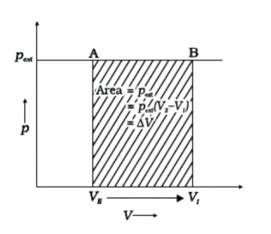Ncert Solutions Chemistry Class 11th
Get insights from 2k questions on Ncert Solutions Chemistry Class 11th, answered by students, alumni, and experts. You may also ask and answer any question you like about Ncert Solutions Chemistry Class 11th
Follow Ask QuestionQuestions
Discussions
Active Users
Followers
New answer posted
5 months agoContributor-Level 10
This is a Short Answer Type Questions as classified in NCERT Exemplar
No, for the state of spontaneity, the enthalpy change is not the only criteria. Entropy also needs to be taken into account here.
New answer posted
5 months agoContributor-Level 10
This is a Short Answer Type Questions as classified in NCERT Exemplar
Throwing a stone from ground to roof

b) the reaction involved is a process where the energy decreases after the reaction. It can be represented as:In process b), potential energy/enthalpy change is a contributing factor to the spontaneity.

New answer posted
5 months agoContributor-Level 10
This is a Short Answer Type Questions as classified in NCERT Exemplar
When a process can be reversed by bringing an extremely small change in it, we call it a reversible process. The pressure-volume graph can be used to calculate the work done. The pressure is not constant, and changes in infinitesimal amounts as compression happens from initial volume Vi to the final volume Vf. The below graph depicts the work done with the shaded area.

New answer posted
5 months agoContributor-Level 10
This is a Short Answer Type Questions as classified in NCERT Exemplar
Assumption: Cylinder is filled with one mole gas, and the piston is frictionless. Let the pressure of gas inside be p and the volume of gas be V_ {I}.
Piston is moved towards the inside to make the external pressure (P_ {ext}) equal to p. Now, let us assume that this change takes place in a single step, hence, V is the final volume. The work done by the piston is depicted in the graph shown below by shading the area.
PextΔV= AV1 (V1-V2)

New answer posted
5 months agoContributor-Level 10
Chemistry NCERT Exemplar Solutions Class 11th Chapter six
Standard molar enthalpy of formation is the enthalpy change for the formation of one mole of a compound from its most stable states or reference states. As per the given information in the question, the standard enthalpy for the given equation is – 572 kJ mol–1
Now the enthalpy of formation for H2O will be half the enthalpy of the value in the given equation. So now we can calculate that
? fH? = = -286KJ/mol
New answer posted
5 months agoContributor-Level 10
This is a Short Answer Type Questions as classified in NCERT Exemplar
As per the information provided in the question, for one mole of CCl4 (154 g), the heat of vaporisation required is 30.5 kJ/mol .
Hence for the vaporisation of 284 g of CCl4, we require:
= 56.2 kJ
New answer posted
5 months agoContributor-Level 10
This is a Short Answer Type Questions as classified in NCERT Exemplar
ΔrH? =ΣB.E (reactant)-ΣB.E (product)
=B.E.H2 + BEBR2 -2 *B.E>HBr
= 435+192-2 (*368)
= 109KJmol-1
New answer posted
5 months agoContributor-Level 10
(i) For n = 3; l = 0, 1 and 2.
For l = 0 ; ml = 0
For l = 1; ml = +1, 0, -1
For l = 2 ; ml = +2, +1,0, +1, + 2
(ii) For an electron in 3rd orbital ; n = 3; l = 2 ; ml can have any of the values -2, -1, 0, + 1, +2.
(iii) For 1p orbital, n and l are both equal to 1. Since, l should always have a lower value than n. So, 1p ortial does not exist.
For 3f orbital, n=3 and l=3. For the same reason, the existence of 3f orbital is not possible. 1p and 3f orbitals are not possible
Taking an Exam? Selecting a College?
Get authentic answers from experts, students and alumni that you won't find anywhere else
Sign Up on ShikshaOn Shiksha, get access to
- 65k Colleges
- 1.2k Exams
- 679k Reviews
- 1800k Answers


